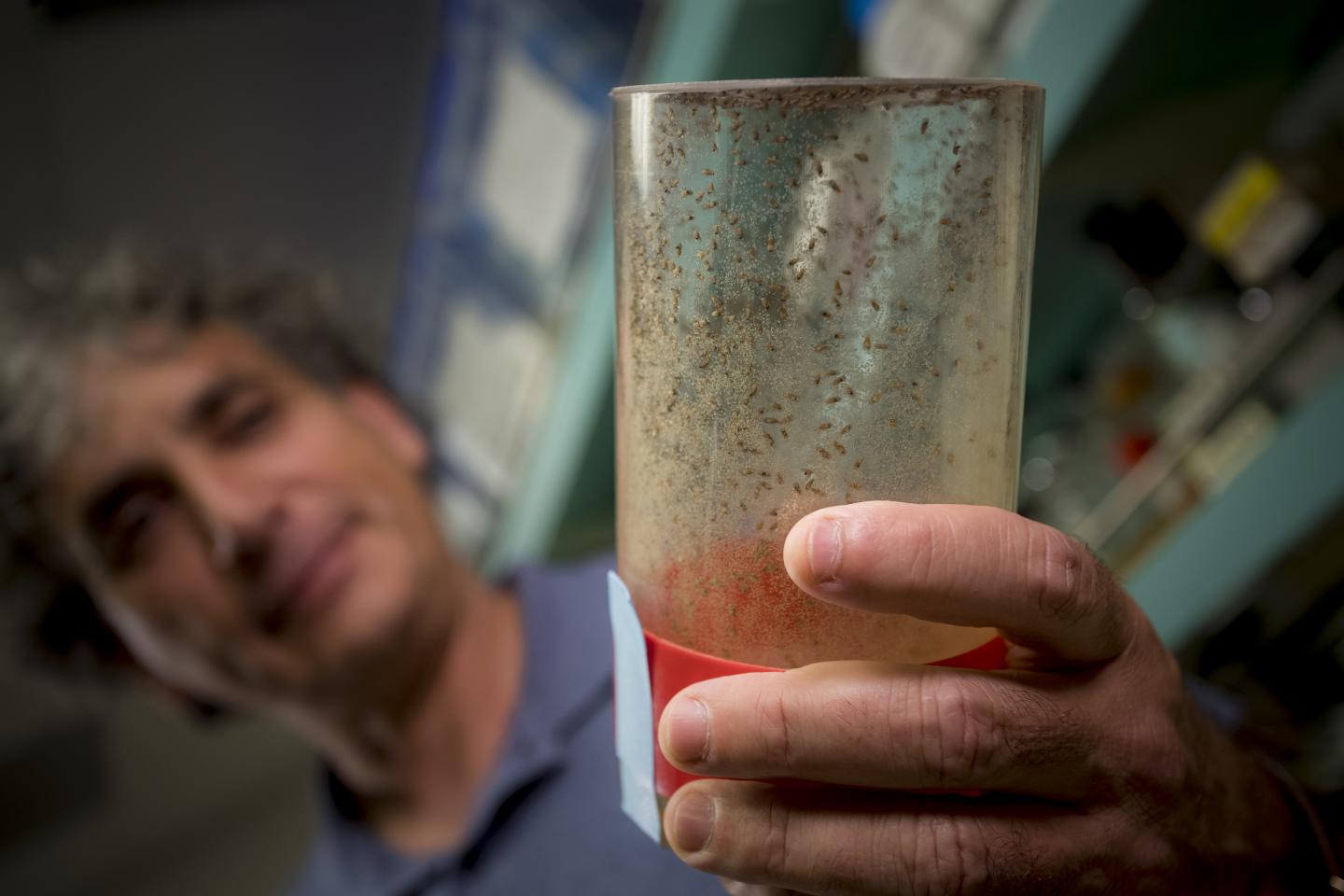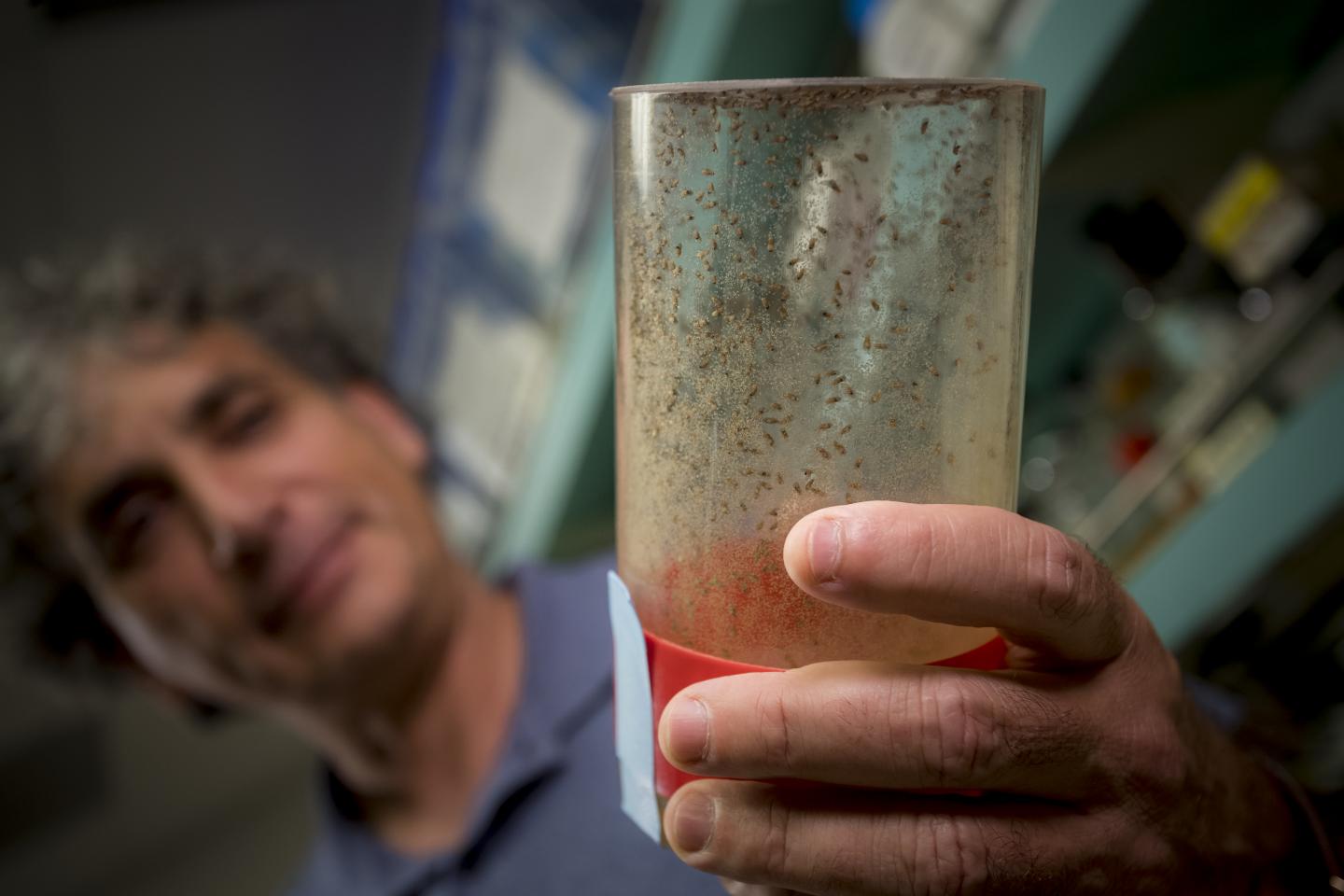
Credit: Erik Jepsen, UC San Diego Publications
In 2015, University of California San Diego biologists Ethan Bier and Valentino Gantz developed a breakthrough technology known as "active genetics," which results in parents transmitting a genetic trait to most of their offspring (instead of 50 percent receiving the trait under standard inheritance). Immediate targets of active genetics included gene-drive systems for immunizing mosquitoes against vector borne diseases such as malaria. Bier and Gantz also proposed using active genetics for a variety of other potential human health and agricultural benefits.
Now, Shannon Xu, together with Gantz and Bier, employ CRISPR/Cas9 to edit gene regulatory elements in their native genomic environments, revealing new fundamental mechanisms that control gene activity, as described Feb. 6 in eLife. The authors also provide experimental validation for using active genetics as an efficient means for targeted gene insertion, or "transgenesis," and single-step replacement of genetic control elements.
"Technical advances enabled by active genetics represent an innovative toolkit to engineer organisms with novel features, thereby enabling a new era of advances in synthetic biology," said Gantz.
The researchers analyzed the genetic control of a gene responsible for coordinating the formation of a simple structure in fruit flies–a wing vein–during its development. The goal of the analysis was to understand mechanisms controlling gene activity in space and time, resulting in a wing vein being reliably placed in its correct position and investigating how this genetic circuit evolved in different species.
Among their findings, the researchers provided evidence for a new potential form of interaction between chromosomes that contributes to the control of gene activity. These observations raise the intriguing possibility that similar forms of cross-talk between chromosomes may occur in other organisms and might eventually define potential targets for epigenetic intervention. They also demonstrated significant advantages of editing gene regulatory sequences in their native location to uncover new functionalities that could lead to a better understanding of how control switches work to turn genes on and off in the body. Perhaps most importantly, these studies demonstrate the general utility of active genetics as a platform for engineering new organisms with novel traits.
"These advances should encourage other researchers to employ active genetics in a broad range of organisms to enable and accelerate their research," said Xu.
"This knowledge may eventually lead to biological design based on first principles. That is, acquiring the knowledge to engineer organisms with specifically designed novel features," said Bier, professor and recently named holder of the Tata Chancellor's Endowed Professorship in Cell and Developmental Biology.
The researchers also examined active genetics as a next-generation tool for transgenesis. So-called "CopyCat" cloning vectors offer the potential to be inserted precisely into the genome at any desired location and then get copied with high efficiency from one parental chromosome to another so that all offspring inherit the CopyCat element. CopyCat cloning, the researchers say, has "the potential to greatly accelerate the assembly of complex genetic strains of animals or plants."
"Such genetic engineering manipulations should open new avenues of research and animal and plant engineering that are out of reach using current technologies," the researchers note. These innovative new areas of biological research are in line with the goals of the Paul G. Allen Frontiers Group, which named professor Bier an Allen Distinguished Investigators in 2016.
Active genetics is also the technology driving the new Tata Institute for Genetics and Society. Based at UC San Diego and India's Institute for Stem Biology and Regenerative Medicine, the institute was launched with a mission to advance global science and technology through socially conscious means and develop solutions to some of the world's most pressing challenges, from public health to agriculture.
###
Natalia Siomava of the Georg-August-Universität Göttingen in Germany also coauthored the paper.
Media Contact
Mario Aguilera
[email protected]
858-822-5148
@UCSanDiego
http://www.ucsd.edu





